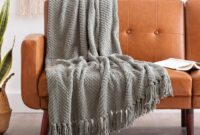Studio apartments offer cozy, compact living, but they come with the challenge of fitting an entire home’s worth of furniture and functionality into one open space. Crafting an efficient and stylish layout in a studio apartment requires thoughtful planning and smart furniture choices. This guide will provide layout tips and practical ideas for making the most of your small space while keeping it comfortable, organized, and visually appealing.
Understanding the Basics of Studio Apartment Layouts
In a studio apartment, you generally have a single open space where all living areas—sleeping, dining, working, and lounging—are combined. This setup requires a well-thought-out layout to ensure each activity has its own dedicated space. The goal is to create an organized flow that makes it easy to move around and use every area of the apartment without feeling cramped.
Key factors to consider:
- Room Zoning: Dividing the space into functional areas.
- Furniture Versatility: Using pieces that serve multiple purposes.
- Storage Solutions: Maximizing storage options to avoid clutter.
Key Furniture and Essentials for Studio Apartments
When choosing furniture for a studio apartment, focus on compact, versatile pieces that offer multiple functions or hidden storage. Essential furniture might include:
- Convertible Sofa Bed: A comfortable place to sit during the day that can also double as a bed at night.
- Foldable or Extendable Table: A small dining or work table that can expand when needed.
- Modular Shelving Units: Flexible storage that can be used as room dividers or for additional shelving.
- Storage Ottoman or Coffee Table: Offers storage space inside and can function as seating, a table, or a footrest.
These pieces allow you to maximize the functionality of your studio apartment while keeping it visually appealing and clutter-free.
Practical Furniture Layout Tips
Creating a layout that works in a studio apartment involves thoughtful space planning and strategic furniture placement. Here are some tips to make the most of your layout:
Create Zones to Separate Living Areas
One of the best ways to make a studio apartment feel more spacious and organized is to create distinct zones for each activity. Zoning can be achieved with furniture placement, rugs, or even room dividers. For example:
- Sleeping Area: Use a bookshelf, room divider, or a curtain to separate the bed from the rest of the apartment. This helps create a private nook for sleeping.
- Living Room: Place a compact sofa or chairs facing away from the bed to establish a separate lounge area.
- Dining or Work Area: Use a small dining table or a wall-mounted desk near the kitchen area, which can double as a workspace.
Creating zones gives a sense of order and makes it easier to switch between activities in your studio.
Opt for Multi-Functional Furniture
Multi-functional furniture is essential in a small space. Look for items that offer multiple uses, such as:
- Murphy Bed: Folds up into the wall when not in use, freeing up floor space.
- Sofa Bed or Daybed: Functions as a seating area by day and a sleeping area by night.
- Extendable Table: Can be used as a small dining table, work desk, or folded away to save space.
- Storage Ottoman: Works as a seat, table, and storage for blankets, books, or other items.
Multi-functional pieces reduce the amount of furniture needed, helping you keep your studio apartment open and uncluttered.
Use Vertical Space for Storage
In a small apartment, it’s important to think vertically as well as horizontally. Vertical storage solutions like wall-mounted shelves, tall bookcases, and hanging organizers make the most of wall space, keeping items off the floor.
Vertical Storage Ideas:
- Floating Shelves: Use above the bed, desk, or kitchen area for books, decor, or kitchenware.
- Tall Cabinets: Tall, narrow cabinets offer ample storage without taking up much floor space.
- Hooks and Wall Racks: Perfect for storing bags, hats, or coats without cluttering entryways.
This approach keeps essential items accessible without encroaching on your floor space, making the apartment feel less crowded.
Choose Light and Minimalist Furniture
When selecting furniture for a small apartment, go for light-colored, minimalist designs that create an airy feel. Pieces with slender frames and open legs allow for better flow and make the space look larger. Transparent or glass tables and chairs can also be effective because they create a light, less obstructive appearance.
Light-colored and minimalist furniture prevents the apartment from feeling heavy or cramped, allowing each piece to enhance the space without overpowering it.
Decor and Styling Tips for Small Spaces
Once the furniture layout is in place, decor and styling can help pull everything together, adding personality and comfort to your studio apartment. Here are some styling tips:
- Choose a Cohesive Color Palette: Sticking to a unified color scheme of light neutrals, pastels, or earth tones creates a harmonious and spacious look. Add small pops of color through pillows or artwork.
- Incorporate Mirrors: Mirrors reflect light and create the illusion of more space. Place a mirror opposite a window or behind a sofa to make the room feel larger.
- Use Rugs to Define Areas: Area rugs help create separate zones and add texture to the room. Choose a rug that’s proportionate to each zone for a balanced look.
- Limit Wall Art and Accessories: Opt for a few larger pieces instead of many small items, which can make the apartment feel cluttered. Keep decor simple and functional, focusing on items you truly love.
- Add Greenery: Plants bring freshness and a sense of calm, adding life to a studio apartment without taking up too much space.
Conclusion: Crafting a Comfortable Studio Apartment
Designing a comfortable and stylish studio apartment requires a strategic approach to furniture layout and space optimization. With the right combination of zoning techniques, multi-functional furniture, and thoughtful decor, you can make your small living space both functional and inviting. By focusing on pieces that add value and organizing your layout thoughtfully, you’ll create a space that feels open, comfortable, and distinctly yours.




